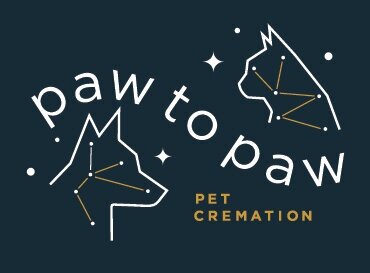5 Low-Impact Exercises to Keep Your Older Dog Healthy and Happy
As our beloved canine companions age, it becomes increasingly important to prioritize their health and happiness. One of the key ways to achieve this is through regular exercise. Just like humans, older dogs benefit greatly from staying active and maintaining a healthy weight. However, it's essential to choose exercises that are gentle on their aging joints and muscles. In this article, we will explore the top 5 low-impact exercises that will help keep your older dog healthy and happy.
Walking as a Low-Impact Exercise
Walking is a fantastic low-impact exercise for older dogs. It provides an opportunity for them to get fresh air, explore their surroundings, and engage their senses. When walking your older dog, it's important to keep their limitations in mind. Start with shorter walks and gradually increase the duration and intensity as their stamina improves. Be mindful of the terrain you choose, opting for flat surfaces to avoid putting excessive strain on their joints. Remember to bring water and take breaks when necessary.
Swimming as a Low-Impact Exercise
Swimming is an excellent low-impact exercise that is easy on your older dog's joints. The buoyancy of the water helps support their weight, reducing the impact on their bones and muscles. Swimming also provides a full-body workout, engaging both their cardiovascular system and muscles. If your older dog is new to swimming, it's important to introduce them gradually and ensure they feel safe and comfortable in the water. Start in shallow water and gradually increase the depth as they gain confidence. Always monitor them closely and provide them with a life vest if needed.
Gentle Stretching Exercises for Older Dogs
Stretching exercises are a wonderful way to promote flexibility and mobility in older dogs. Gentle stretches can help alleviate stiffness and improve range of motion. Some simple stretching exercises you can try with your older dog include gentle neck rotations, leg stretches, and torso twists. Always make sure to perform these stretches slowly and carefully, avoiding any sudden movements that may cause discomfort or injury. If your older dog has any pre-existing health conditions, it's best to consult with your veterinarian before incorporating stretching exercises into their routine.
Using Puzzle Toys and Mental Stimulation as Exercise
Physical exercise is not the only way to keep your older dog healthy and happy. Mental stimulation is equally important, especially for senior dogs. Puzzle toys are a fantastic way to engage their minds and provide mental exercise. These toys often require your older dog to problem-solve and work for their treats, keeping their brain active and engaged. Additionally, interactive games such as hide-and-seek or scent training can provide mental stimulation while also encouraging gentle physical movement. Always choose puzzle toys and games that are age-appropriate and suited to your older dog's abilities.
Tips for Incorporating Low-Impact Exercises into Your Older Dog's Routine
Now that we've explored the top 5 low-impact exercises for older dogs, let's discuss some tips for incorporating these exercises into their daily routine:
Start Slow and Gradual: It's important to introduce new exercises gradually, allowing your older dog to build up their stamina and adjust to the activity. Begin with shorter durations and low intensity, gradually increasing as their fitness level improves.
Be Consistent: Regularity is key when it comes to exercise for older dogs. Aim for daily exercise sessions, even if they are shorter in duration. Consistency will help maintain their fitness and overall well-being.
Observe Your Dog: Pay close attention to how your older dog responds to exercise. Look for signs of discomfort, fatigue, or any unusual behavior. If you notice any concerns, consult with your veterinarian for guidance.
Modify Exercises: As your older dog's needs change, be prepared to modify exercises accordingly. For example, if walking becomes challenging, consider switching to swimming or incorporating more mental stimulation activities.
Precautions and Considerations for Exercising Older Dogs
While exercise is vital for older dogs, it's essential to take certain precautions and considerations into account:
Consult with a Veterinarian for a Personalized Exercise Plan: Every older dog is unique, and their exercise needs may vary based on factors such as breed, size, and overall health. Consult with your veterinarian to create a personalized exercise plan that suits your older dog's specific needs.
Watch for Signs of Overexertion: Older dogs may have limitations that younger dogs do not. Keep an eye out for signs of overexertion, such as excessive panting, limping, or reluctance to continue exercising. If you notice any of these signs, it's important to rest your older dog and consult with your veterinarian.
Consider Joint Supplements: Older dogs may benefit from joint supplements that help support their joint health and mobility. Talk to your veterinarian about whether supplements such as glucosamine or omega-3 fatty acids may be beneficial for your older dog.
Conclusion: Keeping Your Older Dog Healthy and Happy with Low-Impact Exercises
In conclusion, regular exercise is crucial for the health and happiness of our older canine companions. By choosing low-impact exercises such as walking, swimming, gentle stretching, and mental stimulation, we can ensure that our older dogs stay active while minimizing the strain on their aging bodies. Remember to consult with your veterinarian for personalized exercise recommendations and always prioritize your older dog's comfort and well-being. With the right exercise routine, we can help our older dogs lead fulfilling lives and maintain their vitality for years to come.
If you have an older dog, start incorporating these low-impact exercises into their routine for improved health and happiness. Your furry friend will thank you for it!
To learn more about our DFW pet cremation services, contact us today by clicking here.
